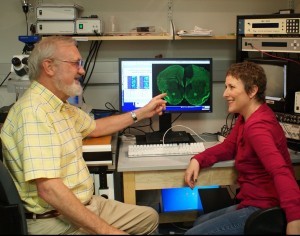With a grant from FRAXA Research Foundation awarded in 2016, Dr. Daniel Johnston and Dr. Jennifer Siegel at the University of Texas at Austin are analyzing pre-frontal cortex (PFC) dysfunction in the Fragile X model. They have preliminary evidence that Fragile X mice are severely impaired in a prefrontal cortex (PFC)-dependent task.

“We are taking a slightly different approach to treating and potentially curing Fragile X,” said Dr. Johnston, professor, Department of Neuroscience, College of Natural Sciences, and Director, Center for Learning & Memory, The University of Texas at Austin. “We are studying how a small proportion of Fragile X mice are able to overcome the dysfunction and learn. In this way, function can potentially be restored. If it is not realistic to fix the many neuronal differences observed in the absence of FMRP, perhaps letting nature tell us how a non-FMRP brain can be functional may be a promising approach for intervention.”

